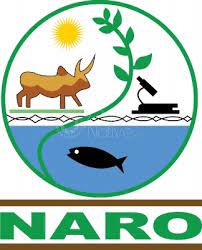Uganda is a landlocked country bordered by Kenya in the east, Sudan in the north, Democratic Republic of the Congo in the west, Rwanda in the southwest and Tanzania in the south. Uganda’s total land area is 241,559 sq km. Eighty percent of Uganda’s land is arable but only 35% is being cultivated. In fiscal year 2020/2021, agriculture accounted for about 23.7% of GDP, and 31% of export earnings. The UBOS estimates that about 70% of Uganda’s working population is employed in agriculture.
Uganda is located on the East African plateau, averaging about 1,100 meters (3,609 ft) above sea level. The plateau generally slopes downwards towards Sudan explaining the northerly tendency of most river flows in the country. Although generally equatorial, the climate is not uniform since the altitude modifies the climate. Uganda’s elevation, soil types and predominantly warm and wet climate impart a huge agricultural potential to the country. They also explain the country’s large variety of forests, grasslands and wildlife reserves. Uganda has a total population of about 32 million people.
Agriculture is a core sector of Uganda’s economy. It contributed about 23% of GDP at current prices in 2011. Agricultural exports accounted for 48.5% of total exports in 2012. The sector provides the basis for growth in other sectors such as manufacturing and services. About 60 percent of Uganda’s population is engaged in agriculture, forestry and fishing. Agriculture has grown at an average rate of 2.8% per year in the last 8 years. It presents immense opportunities for growth in other sectors like manufacturing especially agro-processing.
The agricultural sector is fragmented and dominated by small farmers most of whom combine subsistence farming with cash crop and livestock farming. Most farmers own land individually except in parts of Northern Uganda where pastoralists land is owned communally. Farming is gradually becoming mechanised although the bulk of cultivation is still done by hand or cattle driven ox ploughs. Large / Commercial scale farming of cash crops is found in parts of the Central, South and South Western parts of Uganda. There are commercial plantations of tea, palms, rice, and sugarcane. Coffee and banana plantations tend to be small although in some parts of the South West, there are some commercial scale banana plantations that supply produce to Kampala and other urban centres.
Public Institutes

Ministry of Agriculture (Uganda)
Website available in English
The Ministry recognizes and prioritizes strategic communication and the use of modern online platforms to reach our various audiences. Visitors are therefore welcome to follow the links to our social media pages on Facebook, Twitter, Linkedin, and YouTube and subscribe to the Ministry e-newsletter to keep up-to-date with vital information from the Ministry.
The Ministry Offices across the country are also open to the general public during official working hours for any consultation regarding the agricultural sector and related services.

National Agricultural Research Organization (NARO)
Website available in English
NARO was established by the Uganda Government in 1992 as a semi-autonomous organization to streamline, undertake and promote research in crops, livestock, fisheries and forestry. NARO has nine research institutes working on different commodities. NARO’s plant breeding programmes therefore cover a wide range of crops but cassava, banana and coffee attracted the most of the budget. NARO is working on five areas of biotechnology.

National Crops Resources Research Institute (NaCRRI)
Website available in English
The National Crops Resources Research Institute (NaCRRI) is a constituent institute of the National Agricultural Research Organization (NARO) mandated to conduct research on cereals, root crops, legumes, horticultural crops and oil palm.
Agriculture Related Universities
Makerere University
Website available in English
Makerere University acknowledges that funds received from SIDA under the bilateral Research Cooperation enable Ugandan public universities to conduct impactful research, research capacity strengthening, institutional advancement, generate knowledge and promote research uptake for regional development, which is partly supported as part of the EDCTP programme supported by the European Union.

Busitema University
Website available in English
Busitema University is a multi campus model public University located in the eastern region of Uganda. The main campus is at Busitema and other campuses at Nagongera, Namasagali, Arapai, Mbale, Pallisa and Kaliro.

Busitema University
Website available in English
In 2001 a Technical Task Force was appointed to set up the University. Because of the insecurity in Gulu at the time, the Team set up a temporary office at Lincoln Flat 4 at Makerere University. The Task Force consisted of Dr. J.H. Pen Mogi Nyeko , Prof. Mary. J.N. Okwakol ,Dr. Stephen Tikodri , and Mr. N. Peter Egwel Odyomo. The office relocated to Gulu in early 2002.
Website available in English
Uganda Martyrs University (UMU) is a faith-based private University owned by the Episcopal Conference of the Catholic Bishops of Uganda. UMU acknowledges the late Archbishop Kiwanuka as the Father of Catholic higher education in Uganda.
